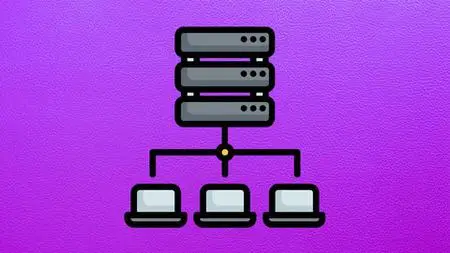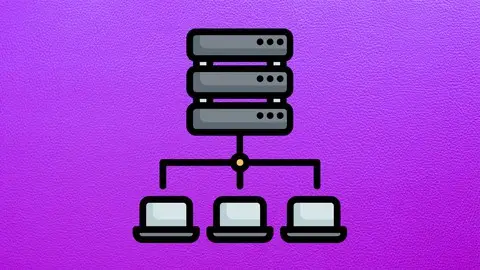Fundamentals Of Backend Communications And Protocols
Published 11/2022
MP4 | Video: h264, 1280x720 | Audio: AAC, 44.1 KHz
Language: English | Size: 12.40 GB | Duration: 14h 51m
Published 11/2022
MP4 | Video: h264, 1280x720 | Audio: AAC, 44.1 KHz
Language: English | Size: 12.40 GB | Duration: 14h 51m
Understand backend communication design patterns, protocols, execution and proxying
What you'll learn
Learn the fundamentals of backend engineering
Backend communication design patterns
Understand how backend communication protocols work
Comprehend how OS Kernel communicate with Backend Applications
Operating System fundamentals (Thread, Process, async IO in linux)
Learn HTTP/1.1, HTTP/2, HTTP/3
Learn gRPC, WebRTC, WebSockets
Learn TLS 1.2, TLS 1.3, QUIC 0RTT
Requirements
Intermediate programming skills (1-2 years)
Having built a backend application
Basic network fundamentals
Description
Backend engineering is an art. During my 18 years career working with and building backend applications, I discovered certain communication design patterns keep emerging. There are only handful of ways clients communicate with backend applications, although they might be more, I believe the patterns I discuss in this course are the most common. Examples of these patterns are request-response, publish-subscribe, short and long and push.Based on these communication design patterns, engineers may use a number of protocols for concrete communication. While the fundemental protocols boils down to either TCP or UDP, tons of industry specific protocols are built on top of these two to address certain problems. Examples of these high level protocols are HTTP/1.1, HTTP/2, HTTP/3, QUIC, gRPC, WebRTC and many more. Each protocol has its pros and cons and fits certain use cases. In the course, I discuss the top common protocols and provide examples and demos where applicable.Once the request reaches the backend, the application has to execute the request. The backend has a buffet of design choices when it comes to the style of execution it can choose. Understanding the difference between a process and a thread, multi-process, multi-threaded and the correlation to the number of CPU cores or hardware threads is crucial to pick the right execution pattern. One does not have to stick with these patterns but can invent new ones that suits their needs.This course is designed for engineers who have built backend applications, it is an intermediate — advance level course, certain programming and networking knowledge is required so I recommend taking my fundamentals of network engineering course before taking this course if you don’t have the networking skills. I hope you enjoy this course, and thank you so much for considering it.
Overview
Section 1: Introduction
Lecture 1 Welcome
Lecture 2 Who is this course for?
Lecture 3 Course Outline
Lecture 4 Download all slides, source code and references
Section 2: Backend Communication Design Patterns
Lecture 5 Backend Communication Design Patterns Intro
Lecture 6 Request Response
Lecture 7 Synchronous vs Asynchronous workloads
Lecture 8 Push
Lecture 9 Polling
Lecture 10 Long Polling
Lecture 11 Server Sent Events
Lecture 12 Publish Subscribe (Pub/Sub)
Lecture 13 Multiplexing vs Demultiplexing (h2 proxying vs Connection Pooling)
Lecture 14 Stateful vs Stateless
Lecture 15 Sidecar Pattern
Section 3: Protocols
Lecture 16 Protocols Intro
Lecture 17 Protocol Properties
Lecture 18 OSI Model
Lecture 19 Internet Protocol
Lecture 20 UDP
Lecture 21 TCP
Lecture 22 TLS
Lecture 23 HTTP/1.1
Lecture 24 WebSockets
Lecture 25 HTTP/2
Lecture 26 HTTP/3
Lecture 27 gRPC
Lecture 28 WebRTC
Section 4: Many ways to HTTPS
Lecture 29 HTTPS Communication Basics Intro
Lecture 30 HTTPS over TCP with TLS 1.2
Lecture 31 HTTPS over TCP with TLS 1.3
Lecture 32 HTTPS over QUIC (HTTP/3)
Lecture 33 HTTPS over TFO with TLS 1.3
Lecture 34 HTTPS over TCP with TLS 1.3 and 0RTT
Lecture 35 HTTPS over QUIC with 0RTT
Section 5: Backend Execution Patterns
Lecture 36 Backend Execution Patterns Intro
Lecture 37 The Process and The Thread and how they compete for CPU time
Lecture 38 How The Backend Accepts Connections
Lecture 39 Reading and Sending Socket Data
Lecture 40 The Listener, The Acceptor and the Reader
Lecture 41 Single Listener, Acceptor and Reader Thread Execution Pattern
Lecture 42 Single Listener, Acceptor and Multiple Readers Thread Execution Pattern
Lecture 43 Single Listener, Acceptor, Reader with Message Load Balancing Execution Pattern
Lecture 44 Multiple Accepter Threads on a Single Socket Execution Pattern
Lecture 45 Multiple Listeners, Acceptors and Readers with Socket Sharding Execution Pattern
Lecture 46 Backend Idempotency
Lecture 47 Nagle's Algorithm
Section 6: Proxying and Load Balancing
Lecture 48 Proxy vs Reverse Proxy
Lecture 49 Layer 4 vs Layer 7 Load Balancers
Backend Engineers,FullStack Engineers,Frontend Engineers interested in the Backend (must have built a backend app),Network engineers who want to get better at backend design,Site reliability engineers



